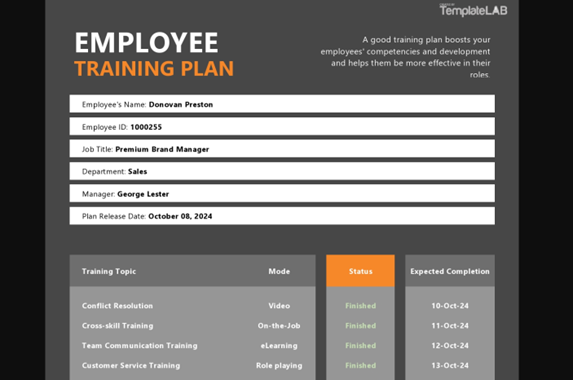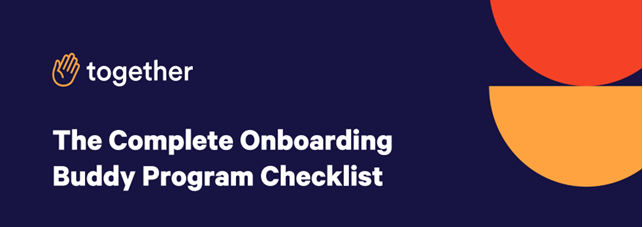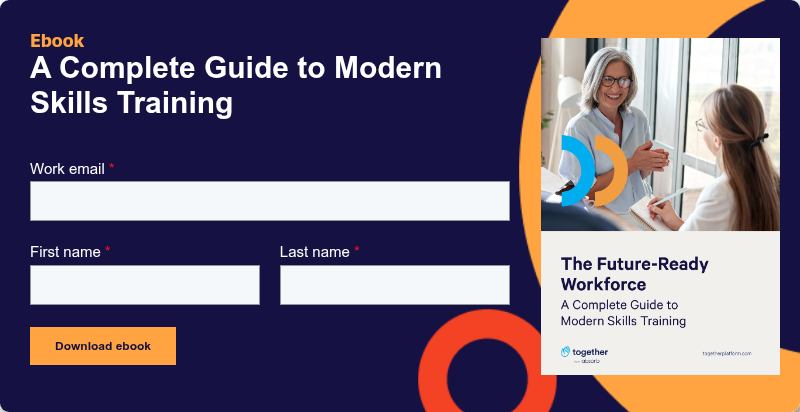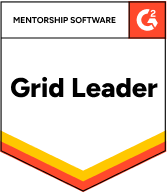You know the scenario: A new hire joins with enthusiasm, completes their onboarding checklist, and still feels lost three months later. Or your team attends a workshop, returns energized, and within weeks, everyone's back to old habits. According to Ebbinghaus's 'Forgetting Curve' research, 70% of knowledge learned during traditional training programs is forgotten within 24 hours—and up to 90% within a week.
Here's what many HR and L&D teams discover too late: training plan templates exist on a spectrum from simple tracking tools to comprehensive development frameworks. With U.S.-based organizations allocating an average of $774 per participant for employee training and development in 2024, choosing the wrong format doesn't just waste time—it wastes significant budget.
The stakes are high. 90% of companies are concerned about employee retention, and their top retention strategy is offering learning opportunities to employees. Yet less than half of managers have received management training, leaving a massive gap between intention and execution.
In this article, we'll examine five proven training plan templates—from basic downloadable formats to comprehensive frameworks that integrate the 70:20:10 learning model and relationship-based development. You'll discover which approach matches your current needs and when to graduate to more sophisticated methods that deliver 415% annualized ROI.
What is a training plan?
A training plan is a structured roadmap that outlines specific learning objectives, activities, timelines, and support systems for developing employee skills. The data supporting formal training plans is compelling: companies with comprehensive training programs see significant performance improvements, while eLearning boosts retention rates by 25–60% with interactive and self-paced content.
What should a training plan include?
Effective training plans share core components:
- Training needs assessment that identifies specific skill gaps through performance reviews and manager feedback
- Clear learning objectives written as SMART goals aligned with both job requirements and career aspirations
- Training content following the 70:20:10 model: Research from the Center for Creative Leadership holds that individuals obtain 70% of their knowledge from job-related experiences, 20% from interactions with others, and 10% from formal educational events
- Timeline and schedule with realistic pacing and key milestones
- Support systems including mentors, coaches, or training buddies who provide accountability
- Measurement and evaluation with pre and post-training assessments, performance metrics, and ROI calculations
📌 Critical insight: Unlike traditional training approaches, the 70:20:10 model emphasizes integrating learning into daily work rather than relying solely on classroom settings, which can result in 70% of knowledge being forgotten within 24 hours.
How to choose the right training plan template
When evaluating templates, consider these key factors:
- Purpose and scale: Are you onboarding 5 new hires or upskilling 200 employees? New hire onboarding needs a different structure than leadership development or technical skills training.
- Measurement requirements: Do you need to demonstrate ROI to leadership? Look for templates with built-in metrics, evaluation frameworks, and progress tracking capabilities.
- Support level: Research shows people are 95% more likely to complete goals when they have ongoing accountability meetings. Does your template include mentor assignment, check-in schedules, and relationship-based learning components?
Template 1: Basic training plan template (Word/PDF)

Best for: Small teams creating their first formal training program, solo HR professionals, or managers training 1-5 employees at a time.
What it is
This foundational template from sources like TemplateLab and StakeholderMap provides a simple, one-page framework covering training essentials without overwhelming complexity. Available as free downloads in Word and PDF formats, these templates offer clean table formats and straightforward sections that anyone can fill out.
Key components
- Training goals and objectives
- Target audience identification
- Content outline (topics to cover)
- Delivery methods (in-person, online, hybrid)
- Training schedule with dates
- Materials and resources needed
- Budget allocation
- Basic evaluation checklist
Why it works
Perfect for getting started without technical skills or software investments. The simple table format makes it easy to communicate training plans to stakeholders. You can complete the template in a single planning session and immediately share it with your team.
What it covers from 70:20:10
Primarily focuses on the 10% (formal training). Minimal built-in guidance on experiential learning or social learning components, though you can add these manually.
Limitations
- No built-in tracking: You're responsible for manually monitoring progress
- Static document: Doesn't adapt as training evolves; requires creating new versions
- Scales poorly: Managing 20+ people with Word docs becomes chaotic
- Missing accountability structures: No framework for mentorship or regular check-ins
- Generic approach: One-size-fits-all format doesn't address role-specific nuances
When to graduate to the next level
When you're training more than 10 people simultaneously, or when you need specialized templates for different training purposes (onboarding vs. skills development vs. compliance).
👉 Get template from: TemplateLab | StakeholderMap
Template 2: New employee training plan template (onboarding-specific)

Best for: Organizations with consistent hiring patterns needing standardized onboarding processes, or companies wanting to improve new hire retention and time-to-productivity.
What it is
These specialized templates break down the first 90 days into clear phases with specific learning objectives. Structured onboarding—especially when manager-led and milestone-based—accelerates new-hire effectiveness and productivity.
Key components
- Pre-boarding activities and first day/week/month milestones
- Progressive responsibility across 30/60/90-day periods
- Mentor/buddy assignment with structured touchpoints
- Manager check-in schedule
Why it works
Structured onboarding reduces new hire anxiety and ensures consistency. 84% of employees agree "learning adds purpose to my work," and good onboarding establishes that culture from day one. Together's framework addresses the 20% social learning component through buddy pairing.
What it covers from 70:20:10
Assigns specific projects (70%), includes buddy/mentor pairing (20%), and mandates systems training (10%).
Limitations
Risk of checkbox mentality, generic templates don't account for role complexity, and mentor matching requires thoughtfulness to be effective.
When to graduate to the next level
When you're onboarding 20+ people per year and need sophisticated mentor matching, or when you want to extend structured development beyond the first 90 days.
👉 Get template from: Together's Onboarding Buddy Program Checklist
Template 3: Skills and competency development plan template

Best for: Organizations focused on upskilling/reskilling existing employees, addressing specific skill gaps, or developing competencies aligned with career progression.
What it is
These templates take a competency-based approach, mapping current skill levels against required proficiency and creating targeted development plans. With 58% of training budgets allocated to upskilling and reskilling, this template type is increasingly relevant for workforce transformation.
Key components
- Skills assessment matrix (current vs. desired state)
- Competency framework with proficiency levels
- Gap analysis and individual development goals
- Training activities linked to each competency
- Manager/mentor involvement for accountability
Why it works
Provides data-driven visibility into workforce capabilities. 68% of organizations report tangible benefits from upskilling initiatives, including improved productivity and career advancement. The Georgia DOAS guide includes 18 core competencies with specific on-the-job, classroom, and self-managed learning activities for each.
What it covers from 70:20:10
Identifies stretch assignments (70%), includes mentorship from subject matter experts (20%), and links to specific courses and certifications (10%).
Limitations
Templates track the "what" but can't capture contextual learning, skills matrices become outdated quickly, and self-assessment has blind spots without external validation.
When to graduate to the next level
When you need to coordinate competency development across hundreds of employees or require sophisticated tracking and reporting for stakeholders.
👉 Get template from: Georgia DOAS Competency-Based Development Guide
Template 4: Comprehensive training program template (ADDIE-based)

Best for: Mature L&D teams implementing enterprise-wide training initiatives requiring formal documentation, rigorous evaluation, and stakeholder buy-in.
What it is
This comprehensive template follows the ADDIE model (Analysis, Design, Development, Implementation, Evaluation)—a structure that helps you create great elearning content through a 5-step methodology that's the key to corporate training success.
Key components
- Analysis: Needs assessment, learner analysis, performance gaps
- Design: Learning objectives, content structure, assessment strategy
- Development: Content creation, materials development, pilot testing
- Implementation: Training delivery, instructor preparation, support systems
- Evaluation: Kirkpatrick's Four Levels, ROI calculation, continuous improvement
Why it matters
Leadership training boosts learning capacity by 25% and performance by 20% when properly evaluated and refined. AIHR's template includes needs analysis worksheets, course design blueprints, implementation planning tools, and ROI calculation templates.
What it covers from 70:20:10
Well-designed ADDIE programs incorporate stretch assignments (70%), peer learning groups and mentoring (20%), and formal courses and certifications (10%).
Limitations
Time-intensive (months to implement), resource-heavy (requires instructional designers), can feel rigid, and even sophisticated evaluation can't replace insights from mentorship relationships. 35% of HR managers cite getting the right training content as a challenge.
When to graduate to the next level
When you recognize that despite comprehensive planning, the missing ingredient is ongoing relationship-based support—structured mentorship programs that extend beyond formal training.
👉 Get template from: AIHR ADDIE Model Template
Template 5: Mentorship-integrated training framework (Together's approach)
Best for: Organizations ready to implement training that addresses all the limitations identified in previous templates by combining structured learning with relationship-based support that drives the 70:20:10 model at scale.
What makes this different
This isn't just another template—it's a comprehensive framework that recognizes the 70:20:10 model emphasizes integrating learning into daily work rather than relying solely on classroom settings. Together's approach systematically builds the 20% (social learning) that most templates ignore.
Core framework components
1. The 70:20:10 integration: Assigns challenging projects with mentor guidance (70%), technology-enabled mentor matching creates developmental relationships at scale (20%), and formal training amplifies the other 90% (10%).
2. Technology-enabled matching: Sophisticated algorithms pair participants based on complementary skills, learning goals, work styles, and geographic considerations.
3. Structured relationship development: Onboarding buddy programs, skills mentorship, leadership development, and cross-functional learning.
4. Accountability and progress tracking: Relationship health monitoring, goal progress tracking, automated check-in reminders, and multi-level measurement.
5. Scalable program management: From pilot programs (20-30 participants) to enterprise implementations (200+ participants).
Why mentorship integration transforms training
Over 70% of employees who receive coaching see improvements in work performance, mentorship programs fuel succession planning and retain company knowledge, and companies with the best training programs can achieve a 415% annualized ROI. Previous templates treat training as content delivery; this framework treats it as relationship-enabled transformation.
Real-world results
49% lower turnover among employees in mentoring relationships, 95% likelihood of goal completion with accountability partnerships (vs. 65% with just commitment), and accelerated time-to-productivity for new hires.
Implementation roadmap
Phase 1 (Weeks 1-4): Define objectives, identify participants, set up matching criteria
Phase 2 (Weeks 5-8): Pilot launch with 20-30 pairs, establish cadence
Phase 3 (Weeks 9-12): Refine algorithms, create resource library
Phase 4 (Month 4+): Scale to additional cohorts, track long-term impact
This framework doesn't replace earlier templates—it enhances them by adding the missing 20%.
👉 Learn more: The Future-Ready Workforce: A Complete Guide to Modern Skills Training
Making your choice
The decision matrix
Choose Template 1 (Basic Word/PDF) if:
- You're training fewer than 10 people
- Budget is extremely limited
- You need something simple to start immediately
- Your training is straightforward and short-term
Choose Template 2 (Onboarding-Specific) if:
- New hire training is your primary need
- You want to standardize the first 90 days
- Reducing early turnover is a priority
- You're hiring 5+ people per quarter
Choose Template 3 (Skills/Competency-Based) if:
- You're focused on upskilling/reskilling existing employees
- Career development and internal mobility are organizational priorities
- You need to document and track competency gaps systematically
- Skills-based talent management is part of your strategy
Choose Template 4 (ADDIE-Based) if:
- You're designing major, enterprise-wide training initiatives
- You need formal documentation for executive stakeholders
- Measuring ROI rigorously is required
- You have dedicated instructional design resources
Choose Template 5 (Mentorship-Integrated) if:
- Previous training hasn't delivered lasting behavior change
- You're ready to scale relationship-based development
- Retention and engagement are strategic priorities
- You want to achieve measurable business results (415% ROI)
Common implementation mistakes to avoid
1. Ignoring the 70:20:10 model: Don't let the 10% (formal training) consume 100% of your planning. On-the-job learning has three times more impact on employee performance than formal training.
2. Skipping the needs assessment: Before you start developing any content or training strategies, you should analyze the current situation in terms of training and knowledge gaps. Training isn't always the solution.
3. Underestimating the importance of relationships: Research consistently shows that people are 95% likely to meet goals when they have ongoing accountability partners. Don't skip the social learning component.
The path forward
The five templates represent a maturity progression. Most organizations:
- Start with basic templates to establish structure
- Expand to specialized formats as needs diversify (onboarding, skills development)
- Formalize using comprehensive frameworks for major initiatives
- Transform by integrating mentorship and relationship-based development
In 2025, 84% of employees agree "learning adds purpose to my work." The question isn't whether to provide training, but how to structure it for maximum impact.
Ready to build a future-ready workforce?
If you're recognizing that your training efforts need more than tracking and documentation—that the missing ingredient is meaningful relationships that support learning—download our comprehensive Skills Training ebook.
You'll discover:
- How to implement the 70:20:10 model at scale
- Frameworks for mentor-mentee matching
- Measurement strategies that prove ROI
- Real case studies from companies achieving 415% annualized returns
👉 Download Free eBook: The Future-Ready Workforce - A Complete Guide to Modern Skills Training
FAQs: Training plans in practice
What is a training plan?
A training plan is a structured document outlining specific learning objectives, activities, timelines, support systems, and evaluation methods for developing employee skills. The best training plans recognize that individuals obtain 70% of their knowledge from job-related experiences, 20% from interactions with others, and 10% from formal educational events, and structure development accordingly.
How do you write a training plan?
Follow these steps: conduct a training needs assessment to identify skill gaps, define clear SMART learning objectives, design the learning journey following the 70:20:10 model (experiential, social, and formal learning), determine delivery methods and timeline, allocate resources, implement with accountability partners, and evaluate at every stage—not just at the end.
What is the 70-20-10 rule for training?
The 70-20-10 rule reveals that individuals tend to learn 70% of their knowledge from challenging experiences and assignments, 20% from developmental relationships, and 10% from coursework and training. This research-based model from the Center for Creative Leadership emphasizes that effective training programs should prioritize hands-on experience (70%), integrate mentorship and peer learning (20%), and use formal training as an amplifier (10%).
What's the difference between a training plan and a development plan?
A training plan focuses on immediate, role-specific skills for current job performance and is typically short-term (days to months). A development plan focuses on long-term career growth and leadership capabilities over months to years. Best practice: integrate both approaches—use training plans to address immediate performance needs while embedding skills within a broader development trajectory.
How do I know if my training plan is working?
Measure effectiveness using immediate metrics (completion rates, assessment scores), behavioral metrics (performance improvements, quality improvements), and business metrics (productivity gains, retention rates, revenue impact). Companies with comprehensive training programs see significant performance improvements. Build measurement into your plan from the beginning, not as an afterthought.
How long should a training plan be?
Duration depends on complexity: short-term plans (1-4 weeks) for orientation or single skills, medium-term plans (1-3 months) for role-specific onboarding or certifications, and long-term plans (3-12+ months) for leadership development or technical mastery. Important: 70% of knowledge is forgotten within 24 hours, so design learning over time with spaced repetition, real-world application, ongoing mentorship, and regular check-ins rather than cramming everything into intensive periods.



.svg)







.svg)

